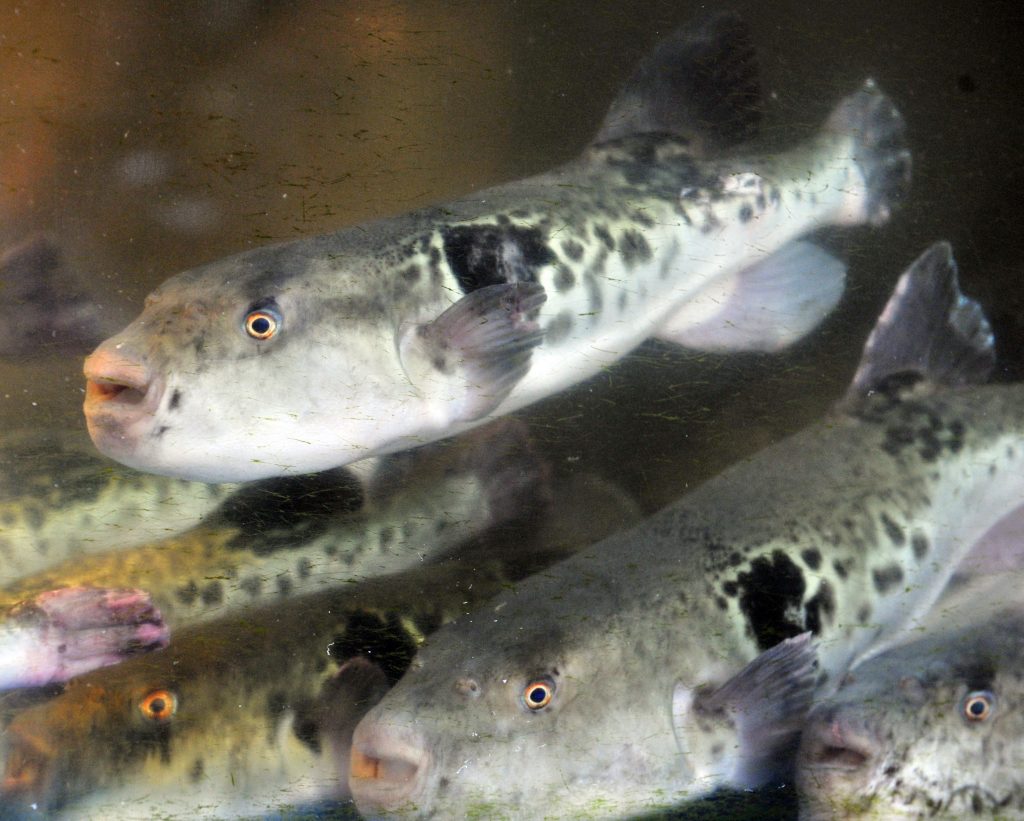
- ARAB NEWS
- 26 Apr 2024

KYOTO: A genome-edited pufferfish may be widely consumed at households in Japan in the not-so-distant future.
Using genome-editing techniques, a startup linked to Kyoto University and Kindai University in western Japan has succeeded in increasing the growth speed of a popular pufferfish known as torafugu by up to 2.4-fold and 1.9-fold on average.
The genome-edited torafugu, named the “22nd-century fugu” by the Kyoto-based startup, Regional Fish Institute Ltd., received favorable comments after trial sales in late November. The fish had “a nice texture,” said a person who tasted it.
After seeing 290 packages of the genome-edited torafugu sold in the trial, Regional Fish started putting as many as 2,000 packages per month up for online sale.
From torafugu’s about 400 million genes, the startup removed four leptin receptor genes that control appetite, according to Yasuo Shiomi, manager of its corporate planning division.
While the existing selective breeding method usually takes several decades to produce fish with desirable characteristics, genome editing, which cuts specific genes, takes only a few years to bear fruit, Shiomi said.
Genome-edited food can be sold after filing with state authorities. The procedure is simple because, unlike gene modification, changes made in genome editing can happen in nature.
Although the filing for the genome-edited torafugu was accepted in late October, Shiomi said, “There’s a widespread image that genome editing is scary.”
The lack of an obligation to label genome-edited products as such may be fueling people’s fears.
Aiming to dispel the negative image, the company started the trial and online sales and now plans to consider the market distribution of the genome-edited fish at an appropriate time.
It is also releasing information on genome-edited food and has received positive comments from readers. “We have to give thorough explanations to win understanding from a wide range of people,” Shiomi stressed.
Looking at food security in the future, the startup is conducting similar studies on some 20 species including whiteleg shrimp.
According to the U.N. Food and Agriculture Organization, the world is expected to face severe shortages of protein sources in 30 years, when the planet is estimated to be populated by over 10 billion people.
“The history of fish breeding is shorter than that for livestock, and therefore the field has great possibilities,” the startup official said.
“We can produce proteins using less feed (for fish) than for livestock,” he added. The genome-edited pufferfish realized 40 percent improvement in the feed efficiency rate.
“We’re working (on genome-edited fish) with confidence, so we want many people to be interested in it,” Shiomi said.
JIJI Press